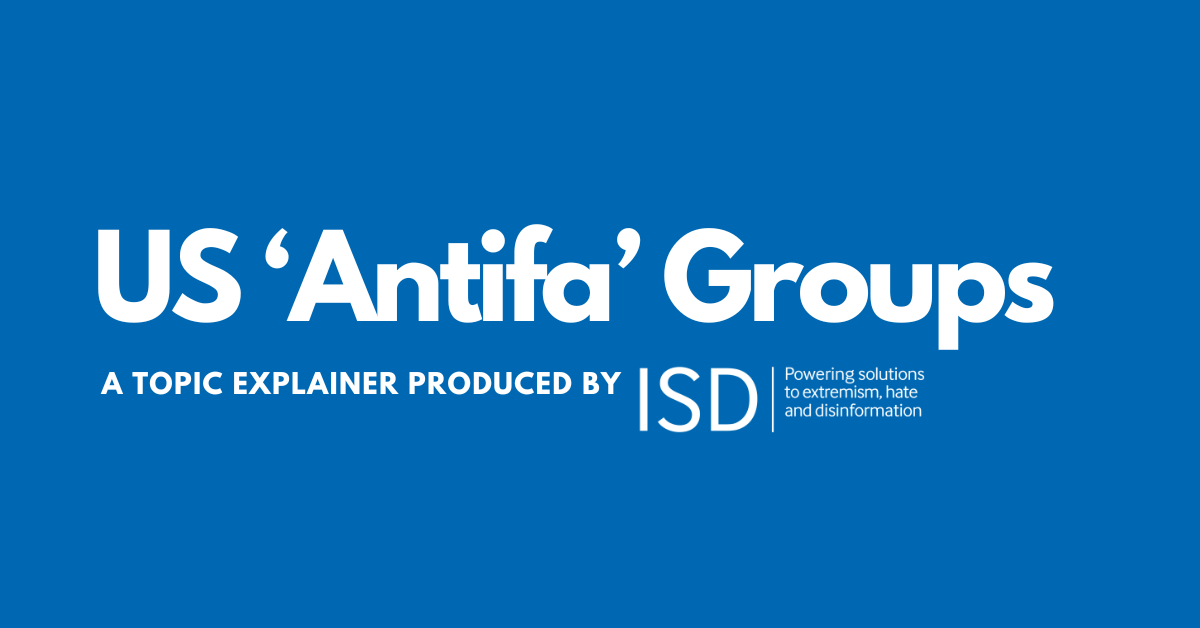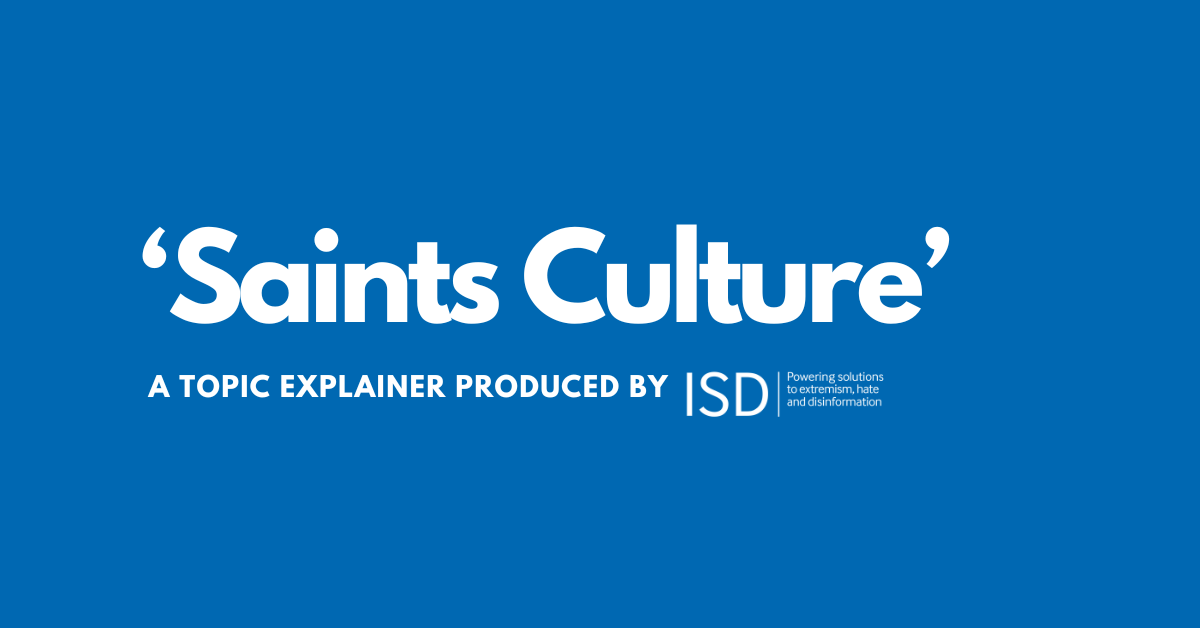Boogaloo Movement
A downloadable version of this page can be accessed here.
The Boogaloo movement is an anti-government, anti-law enforcement extremist militia movement that believes the state places too many limitations on individual liberty, and that a second civil war is necessary to push back against these intrusions.
The Boogaloo movement arose in 2019 in the United States. Although it originated with an internet meme, Boogaloo public appearances and recent related arrests demonstrate its potential to mobilize offline: The Anti–Defamation League (ADL) lists 15 instances of Boogaloo-related arrest between 2019 and 2020, one of which involved arresting 13 individuals, charged with plotting to kidnap the governor of Michigan and whom were connected to a Boogaloo group that spoke of storming the Michigan capitol.
What is it and why is it dangerous?
The Boogaloo started as an internet meme referring to a second American civil war. Research by Bellingcat dates this back to at least 2012, when the phrase “civil war 2 – electric boogaloo”* was already in use in right-wing threads on 4Chan’s weapons board (/k/). It has also been used by white nationalists as a more explicit call for race war. Since then, the Boogaloo movement has grown into the mainstream via platforms like Facebook, and has formed into a loosely organized anti-government militia movement that beliefs insurrection against the state is necessary to protect individual liberties. Beyond this, however, cohesiveness of ideology across the movement’s various networks remains limited.
The danger of the movement lies primarily in that it incites unlawful use of violence and consists of well-armed accelerationist groups with a desire for civil strife and collapse of the state. Compounding this is the racist, xenophobic rhetoric that many individuals related to the movement employ – in fact, there exists significant overlap between white nationalist ideology and the Boogaloo movement. The Southern Poverty Law Centre (SPLC) states, for example, that “divisions over the issues of race and political ideology have become more prominent within the Boogaloo subculture as [Black Lives Matter] protests across the country have grown”, while Bellingcat researchers found notable examples of anti-Muslim and broader anti-minority rhetoric on Boogaloo-related Facebook pages. Further, while the movement originated online, the recent spate of Boogaloo-related arrests to do with plotting to to commit violence points to the very real, offline dangers it poses.
Related narratives and terminology
Big Igloo, Big Luau
Plays on the original term “Boogaloo”, used interchangeably and deployed to avoid content moderation efforts by social media platforms. Boogaloo merchandise often features images of igloos or of Hawaiian print as a nod to these adaptations.
Boojahideen, Boogaloo Bois, Boog Bois, Boog Brotherhood
How affiliates of the Boogaloo movement refer to each other. “Boojahideen” is a play on “mujahideen”, Arabic for those engaged in “jihad”. The use of “boys”, “bois” and “brotherhood” reflects the largely male membership of the movement.
Second Amendment narratives
Related to anti-government narratives are those regarding gun ownership. The Boogaloo movement is staunchly against gun control legislation. Some affiliates of the movement even argue that the Boogaloo (second civil war) will start because of state-led confiscations of firearms, suggesting it is within a gun owner’s right to use violence reactively as defense against such measures.
The 1776 generation
The Boogaloo movement often refers to 1776 as a time in which people embodied the principle of liberty, something they feel current generations need to replicate by doing whatever is necessary to end government tyranny. Boogaloo-affiliated merchandise therefore sometimes features the timber rattlesnake (pictured below). Originally attributed to a publication by Benjamin Franklin, the timber rattlesnake depicts the original thirteen colonies with “join or die” written underneath. It was thought to be incredibly effective at uniting the colonies against French and British rule, and it has been co-opted by the Boogaloo movement as a symbol of successful resistance against a ruling authority.
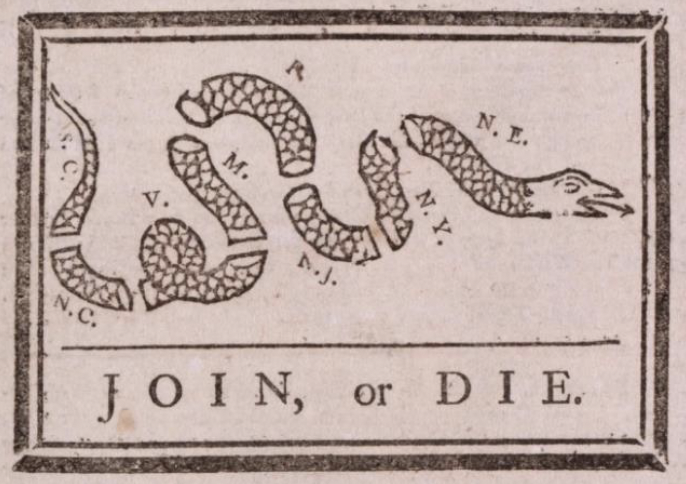
Anti-government narratives
Central to the Boogaloo movement is anti-government sentiment that accuses the state of infringing too much on human freedoms and liberties. As quoted from the “About Us” page on Boojahideen Outfitters, a website that sells clothing, flags, stickers and accessories branded with Boogaloo terminology and/or imagery, “we want every single limitation that has been put on our freedom to be abolished, and our promised liberties restored”. The Boogaloo movement essentially believes in the necessity of a second US civil war to implement minimal government.
Tying in with anti-government narratives is anti-law enforcement rhetoric, where police are seen as enforcers of the infringements on liberty mandated by the government. The killing of militia affiliate Duncan Lemp by police in March 2020 was a particularly important moment for the Boogaloo community, leading to Lemp becoming a ‘martyr’ for the movement, and his death used to reinforce anti-law enforcement sentiment. It is also because of their anti-police beliefs that some members of the movement are thought to have joined Black Lives Matter protests, as well as seeing the protests as an opportunity to distance themselves from their racist ties. Members of the movement have also joined nationwide protests against coronavirus safety measures, seeing these as proof of governmental tyranny and rights-infringement.
Boogaloo merchandise
There are multiple websites dedicated to selling Boogaloo merchandise, ranging from Hawaiian t-shirts (see “Big Luau”) to patches, flags and clothes with igloos on them, and more. Sample sites include Boojahideen Outfitters (pictured below), Liberty Actual, the homepage of which reads “Welcome to LibertyActual, where the Big Liberty Icehouse still has a home”, Uprise Armory, Antistate, Quasi Aquam, I am the Remnant, 1776.shop and Boog Boi Supply.
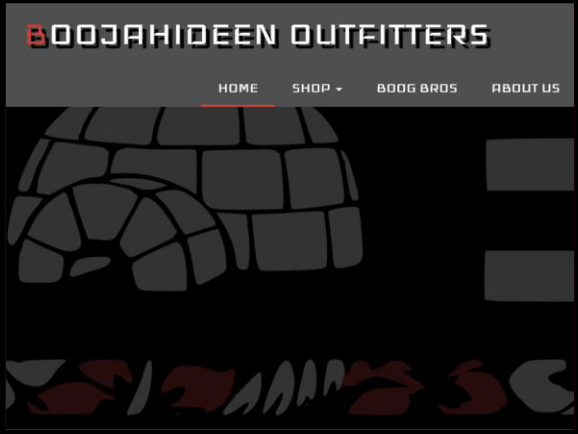
While some of these sites explicitly reference the Boogaloo, either via the merchandise being sold or via narrative text on the site, others take a more implicit approach by simply utilizing Boogaloo-related imagery and terminology.

Uprise Armory homepage. The site does not directly mention the Boogaloo, but the homepage, which features a Hawaiian t-shirt and the slogan “Liberty for All”, as well as the apparel being sold suggests it is targeted towards the Boogaloo movement.
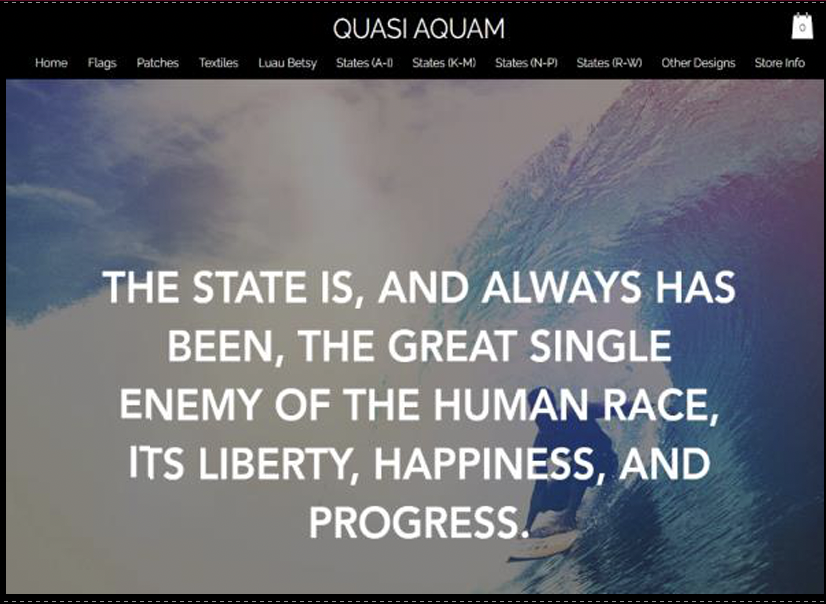
Quasi Aquam homepage, clearly defining the state as the enemy of liberty. The site sells flags and other items that clearly reference the Boogaloo.
Sample Items Offered
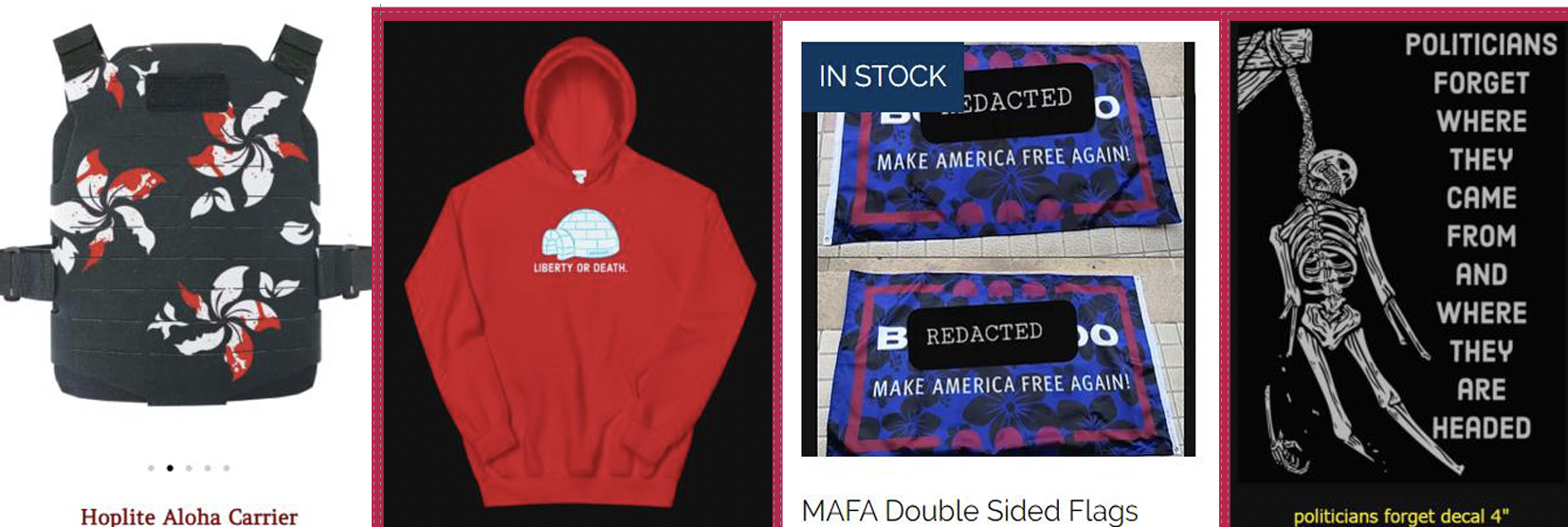
The items sold range from general merchandise to that which holds more practical use. As with the websites themselves, the products either directly reference the Boogaloo, such as the “Make America Free Again” flags and the “Boojahideen” tab, both pictured above, or implicitly do so via incorporating imagery and symbolism typically employed by the movement. The hoodie pictured, for example, features an igloo in reference to the “Big Igloo”, interchangeably used with “Boogaloo”, as well as the slogan “Liberty or Death”, thus alluding to the purpose of the Boogaloo movement.
The plate carriers (vests in which additional ammo is stored) similarly implicitly references the “Big Luau”, also interchangeably used with “Boogaloo”, through its name and print, both of which allude to Hawaii. Also pictured is a graphic and threatening decal sold on Antistate, that nods to the Boogaloo movement’s disdain towards government, and a face mask that features the timber rattlesnake, co-opted by the movement to symbolize their willingness to fight for liberty (or at least their understanding of the term).
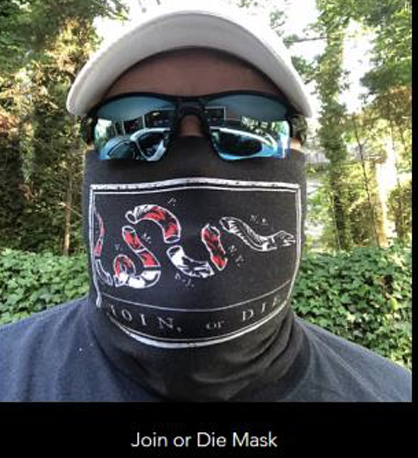
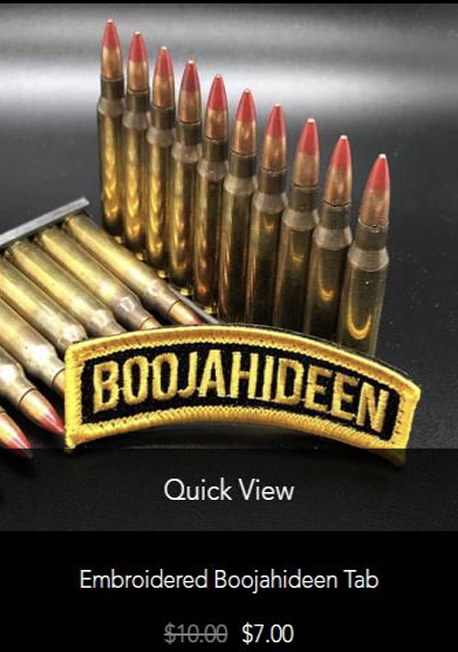
Militia movements in the US
The Boogaloo movement exists within a broader, complex landscape of American militia movements. The Armed Conflict Location & Event Data Project (ACLED) reports tracking over 80 active militias across the US in the past months, stating that “right-wing militias have steadily ramped up their activities, and taken on increasingly outsized profile within the national political movement” (ACLED, 2020). The Boogaloo is one of the nine they report as most active this year. This section provides a short overview of this landscape and the similar and diverging ideologies these more active groups embody.
American militia movements in the 21st Century Obama’s election in 2008 saw a resurgence of militia movements across the US, primarily in response to perceptions that a democratic government would bring with it stricter gun legislation and greater government tyranny. Militia movements, by nature of being paramilitary, are strictly opposed to gun control legislation, which they view as government overreach and a violation of the second amendment. Social media also played a prominent role in this resurgence, with militias taking to social media platforms to recruit and to network. Some estimates record a nine-fold increase in militia movements between 2008 and 2011. While this followed with a period of quiet and decline, Trump’s election in 2016 bro ught with it an emboldening of many of these groups, who viewed him as a potential ally for their desires.
Conspiracy theories
Many militia movements operate partially in response to conspiracy theories like that of the New World Order, which posits that tyrannical forces are trying to institute an authoritarian, one-world government. They perceive gun control legislation as proof of this attempt to exert undue control over American citizens, and frame themselves as a necessary response to this encroachment and as defenders of American civilians and their freedoms.
Attitudes towards government and law enforcement
Since the 1990s and particularly in the context of Obama’s election in 2008, militia movements were, for the most part, strongly opposed to the federal government. While some militia movements remain so today, others changed or lightened their stance when Donald Trump won the 2016 election, and have instead redirected their hostilities towards the left, antifa, and/or immigrants. Similarly, the movements diverge in their stance towards law enforcement. Some groups, like the Boogaloo Bois, largely view law enforcement as enforcers of government tyranny (see page two). Others are more likely to work with or alongside law enforcement. The Oath Keepers, for example, are known to recruit former police officers and have joined demonstrations to help law enforcement by “defending” local shops and businesses from Black Lives Matters protestors.
A sample of prevalent movements
Three Percenters (III%ers) – founded in 2008, formerly anti-government but generally supportive of Trump so have diverted their focus to antifa and immigrants.
Oath Keepers – founded in 2009, this group focuses its recruitment and rhetoric towards the military and law enforcement, recruiting active and former members of both. The name comes from swearing to defend the Constitution against all enemies, domestic and foreign.
Proud Boys – although operationally distinct from traditional militias, Proud Boys are still important in the broader militia context. Founded in 2016, they are a violent street protest movement that self-identifies as “western chauvinist” and are known to espouse anti-Muslim, anti-immigrant and misogynistic rhetoric. After Trump’s “stand down and stand by” comment, the Proud Boys inserted the phrase into their merchandise and apparel. The ACLED also reports that they are becoming increasingly militant and have been active in at least 11 states since summer of 2020.
Examples of militia-affiliated criminal activity since 2016
⏩ 2016 – a militia leader is arrested after allegedly trying to set off an explosive at a Bureau of Land Management facility in Arizona.
⏩ 2016 – three affiliates of “The Crusaders” are arrested for allegedly plotting to bomb a predominantly Somali apartment complex.
⏩ 2016 – a militia affiliate is arrested after allegedly claiming he would firebomb an FBI Office in Albany, and for possession of a firearm, which he was not permitted as a previously convicted felon.
⏩ 2017 – a “Three Percenter” is arrested after allegedly attempting to detonate a car bomb in Oklahoma City.
⏩ 2017 – members of the “White Rabbit Militia” are arrested for allegedly plotting to bomb an Islamic centre in Minnesota. Separately, other members of the same group are arrested for allegedly attempting to bomb a medical practice that offers abortion.
⏩ 2020 – An individual is arrested in Ohio for allegedly plotting to kill police officers and starting an anti-government insurrection.
⏩ 2020 – An individual is arrested in Ohio for allegedly plotting to kill police officers and starting an anti-government insurrection. A few days later, the same affiliate allegedly kills
a Sheriff and injures a deputy at his residence in Ben Lemond.
⏩ 2020 – two militia affiliates are arrested for being in possession of firearms, which is not permitted for previously convicted felons.
⏩ 2020 – a 17-year-old allegedly travels to Kenosha to join militiamen at a Black Lives Matter protest, where he fatally shoots two and injures a third protestor.
⏩ 2020 – thirteen members of the “Wolverine Watchmen” are arrested for allegedly plotting to kidnap the Governor of Michigan, as well as plotting to attack police and ambush the state capitol.
Social Media Presence and Online Forums
4chan
Boogaloo as a term denoting armed conflict or civil war is understood to have started, or at least solidified, on 4Chan, specifically the weapons (/k/) forum. It has since manifested into a more organized, albeit loosely, movement that has expand ed onto more mainstream platforms.
Facebook, Instagram, TikTok and Reddit
Although Facebook deleted over 200 Boogaloo groups on the platform and a further 95 related Instagram accounts, the Tech Transparency Project reports that many Boogaloo groups have evaded this crackdown and still operate on the platforms, by rebranding themselves and limiting explicit use of the term “Boogaloo”.
Similarly, Media Matters found a number of videos mentioning and supporting the Boogaloo movement on TikTok, a video-sharing platform, with multiple videos garnering over 10,000 views each. The movement is also known to have a presence on Reddit and Telegram.
Futher Reading
The Boogaloo Started as a Racist Meme (SPLC) – A useful article by the Southern Poverty Law Centre that takes readers through the history and beliefs of the Boogaloo movement.
The Boogaloo Movement (ADL); The Boogaloo: Extremists’ New Slang for a Coming Civil War (ADL) – The first source takes an in–depth look at the origins and ideologies
of the Boogaloo movement, while the second looks at how the term “Boogaloo” has been used, by who and for what purpose.
The Boogaloo is not what you think it is (Bellingcat) – A historical look at the Boogaloo movement, with a focus on its presence and usage of social media platforms.
The Militia Movement (ADL) – For an overview of militia–related criminal activity, scroll to the bottom of this source.
Standing By – Right-wing Militia Groups and the US Elections (ACLED, MilitiaWatch) – An overview of militia movements in the US in the context of the 2020 elections, with a deeper look into nine prominent ones, including the Boogaloo movement.
_________________________________________________________________________________
Produced with support from ![]()
This Explainer was uploaded on 7 December 2022.

